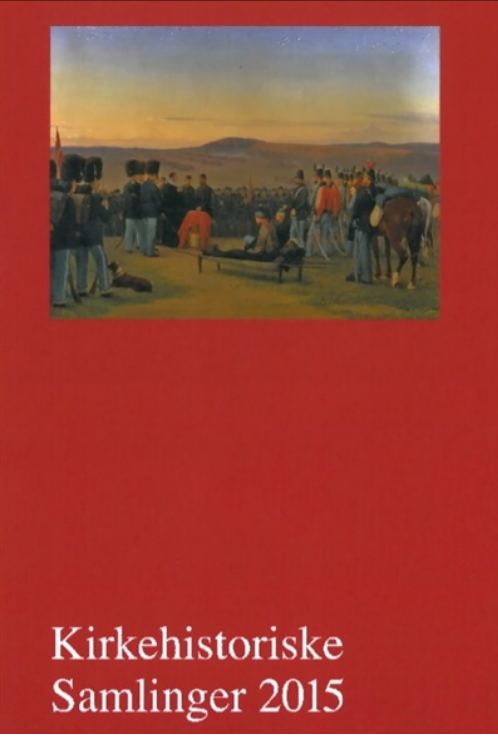Publiceret 25.02.2025
Citation/Eksport
Copyright (c) 2015 Tidsskriftet Kirkehistoriske Samlinger

Dette værk er under følgende licens Creative Commons Navngivelse – Ingen bearbejdelser (by-nd).
Resumé
Et tilbageblik i historien viser, at der i en dansk sammenhæng lige siden middelalderen har været præster tilknyttet forskellige hærenheder og grupper af krigsfolk i felten. Også i dansk krigshistories nyere tid har der som noget selvfølgeligt været knyttet tjenestegørende præster til de udsendte militære enheder. Baggrunden for udsendelsen af feltpræster er ganske interessant for så vidt, som det danske forsvar først i 1966 fik en egentlig værnspræsteordning, idet der ved kongelig resolution udnævntes tre værnsprovster: Svend Balslev blev feltprovst, Harald Sandbæk blev orlogsprovst og Niels Zeuthen blev flyverprovst. Artiklens overordnede formål er at give et historisk overblik over den 150 år lange proces, som i en dansk kontekst førte frem mod en egentlig feltpræstetjeneste i anden halvdel af det tyvende århundrede. Processen beskrives og oprulles på baggrund af en sparsom sekundærlitteratur og en hel del kildemateriale, der både rummer erindringsbøger, avisartikler, offentlige dokumenter og senest interview med nogle af den sidste del af processens hovedaktører.
Summary
Danish army chaplaincy’s regulatory foundation, organization and development, especially from 1850 until present time.
Up to now, surprisingly little attention has been paid to the army chaplains in the Danish national church. This has left many questions unanswered and leads us towards a subject which clearly requires advancement. The purpose of the present project has been to address this knowledge gap.
The basic method of the study has been to present and analyse material that ranges from more normative material, such as laws and reports to diaries and memoirs of the Danish Military chaplains. Besides empirical depth and width, this approach has also served as a way of emphasizing the fragile nature of the question raised within the project; namely their historical contingency.
The main result from the study of the guidelines for the army chaplains shows that there was little if any formal regulation of the chaplain’s activity, but as the study reveals, most of the army chaplaincy’s success was due to the strong personal commitment of the chaplains. There was not made a new regulative until 1962.
However, as the analysis also shows, this is not the beginning of the story. Army chaplains have served with the military for hundreds of year. Throughout the 1700s and until the beginning of the Napoleonic wars in 1814, there has been assigned a chaplain to each regiment. That came to an end in 1814. Afterwards the army no longer had a permanent staff of chaplains.
In the years from 1814 and onwards a new principle of recruitment
emerges. Now the Danish army chaplains were recruited ”ad hoc”. However,
it can be stated that the appointment authority was centralized by
the Bishop and by the Ministry of cultural and ecclesiastical affairs. Furthermore the study has shown that not one army chaplain was recruited between 1866 and the Second World War. In the years that followed, the chaplains again served the army by appointment “ad hoc”.
In 1954 the ministry of cultural and ecclesiastical affairs designated an army dean, a navy dean and an air force dean. Their job was to develop a central institution - a stable system. Their work paid off and two years later in 1956 the army dean designated 42 chaplains.
The first step toward a more regulatory foundation and organization was taken in 1960 when the ministry of cultural and ecclesiastical affairs appointed a Committee to treat the question of the pastoral service of the military.
In 1962 the law was passed which allowed chaplains to be appointed as army chaplains, and not just delegated clergy. They were along with other groups placed outside of the military order.
In 1966 there was nominated a dean for each military force. They were appointed and were now full time members of the military. This meant that finally in 1971 the army dean could appoint the first Reserve chaplains.
The roles of chaplains within the military have been discussed by theologians, bishops and media such as newspapers and television, but the presence of army chaplains has remained as important as ever. Chaplains have continued to serve wherever Danish soldiers have been sent. This study shows that pastoral support seems important for most soldiers – and maybe especially for those soldiers who risk making the ultimate sacrifice around the World.

